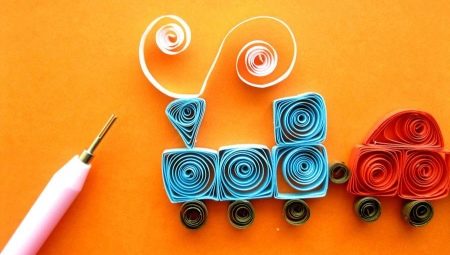Quilling called the creation of artistic compositions from colored paper stripes. He is fond of adults and children, people with art education and those who last painted and glued in elementary school. Quilling has been known since ancient times, only in the 20th century it experienced several waves of popularity. Today this type of creativity is in demand more than ever.
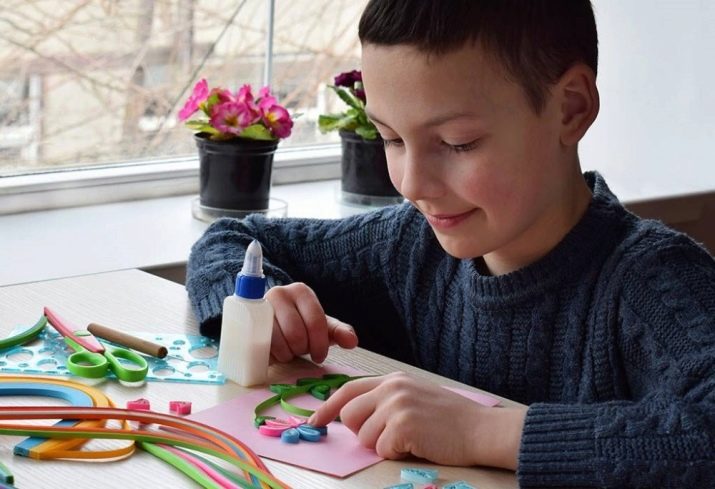
What is it and how is it useful?
The name of the artistic direction comes from the word quill, which means "bird feather." Also, this type of creativity is called paper filigree or paper curling. The strips are twisted into different shapes, and whole works are created from them.
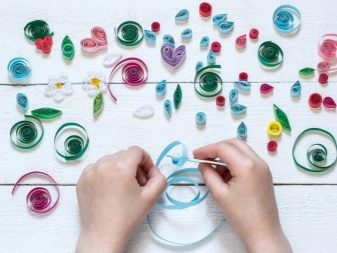
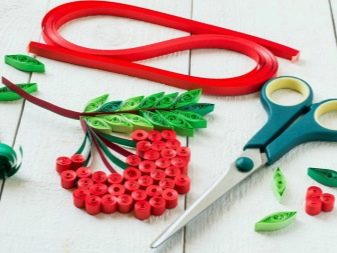
Quilling for children is not only a pleasure of creativity, but also development.
We learn what technology is developing.
- Fine motor skills. Nervous endings in the fingers of a child are stimulated by simple actions with paper. But finger motility is associated with the speech function of the child. About a third of the area of the GM cortex is occupied by the projection of the hand, and it is located next to the speech zone.
- Speech if the child has speech therapy problems. Paper construction can be combined with speech therapy exercises. So it’s more interesting for the baby to engage in the development of speech and articulation, and at the same time he creates. And to do two things at the same time is super-exercise for brain development.
- Perseverance, attention, concentration. Work requires accuracy and attentiveness, concentration and the ability to predict the result of immediate actions.
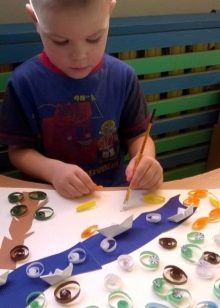
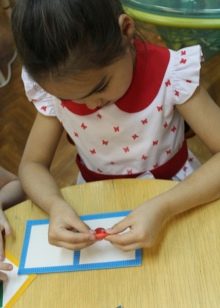
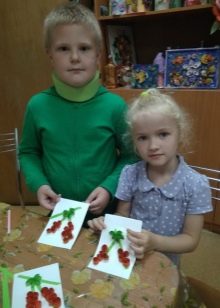
Finally, the technique develops a child’s eye, imagination, creative thinking.
It is important to start doing various crafts with your baby in time in order to stimulate the development of intellectual functions and fine motor skills in time. Quilling is perfect for this.
Preparation of tools and materials
A large list is not required. Very often, shops selling creative goods sell ready-made children's setsin which there is paper (different in color and texture), scissors and glue, toothpicks. There may be a special ruler and a few sheets corrugated cardboard. If such a set was not found, everything can be purchased independently.
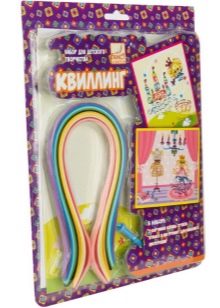
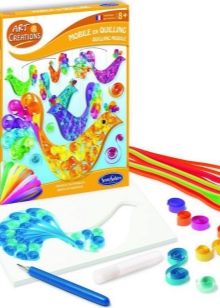
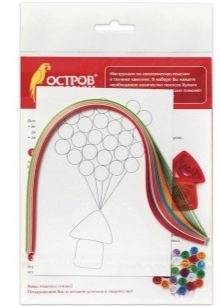
What will be needed for creative studies:
- narrow long strips of colored paper;
- a tool to help make spirals (from professional to a simple ruler or pencil);
- scissors;
- glue - PVA with a narrow neck is suitable;
- ruler with different sized circles;
- tweezers (for children it is better to take plastic).

For starters, this will be enough. If the child is keen on quilling, the stock of materials can be expanded - use different options for paper: color, density, texture.
Of course, you need to fix right away storage system which will additionally accustom the child to order.
Where to begin?
In the first lesson, the child should be taught to do the simplest preparation - spiral. It is based on the manufacture of various figures.
- At the end of a regular toothpick, you need to make a small slot - this is the parent's job.
- Cut colored paper into equal strips 3-5 mm wide.
- Insert one tip of the finished strip into the cut of toothpicks, fix it there. The rest of the strip must be wound on a stick so that the tape takes the form of a spiral.
- When the strip ends, a little glue should be applied to its free end and attached to the spiral so that the element could not unwind.
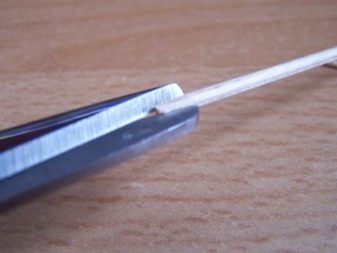
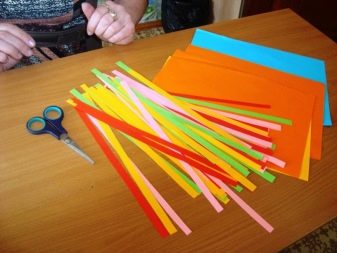
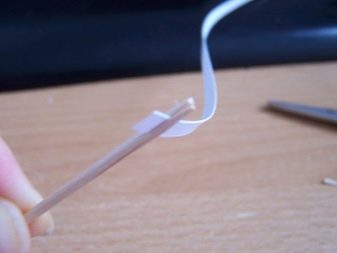
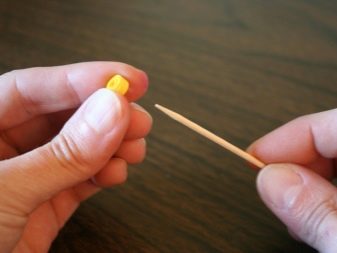
Perhaps not the first time the child will learn a simple skill. For older children, this is faster, but even preschool children are able to cope with the task (not without the help of adults).
In the future, you can practice the manufacture of parts such as drop, leaf, eye, semicircle, crescent, curl.
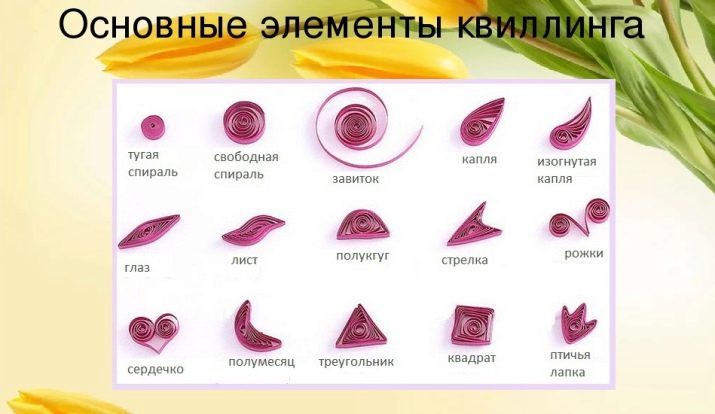
DIY crafts schemes
The first paper-curling workshops are held in the garden. But if you want to get ahead of the educational program or expand it, parents can do quilling at home with their children. The younger the child, the easier the topic of crafts. The simplest can bring the baby no less fun than more complex schemes.
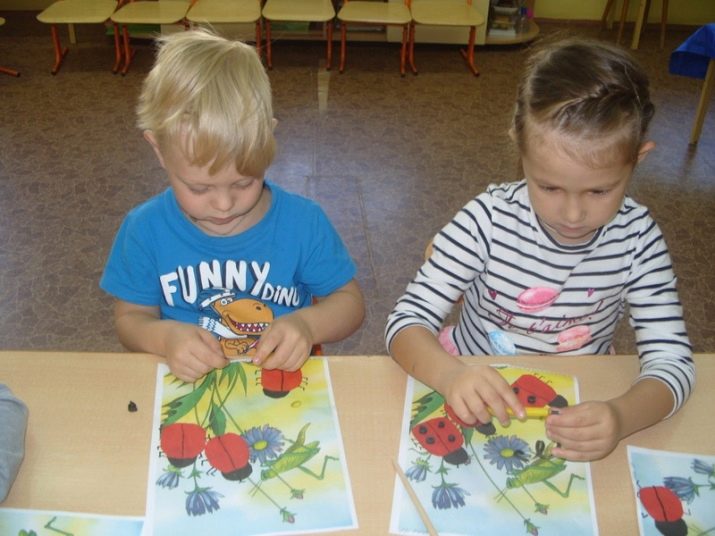
3-5 years
For preschool kids, the easiest stories and applications are selected. For example, at the very beginning of winter, they, together with their parents, can make simple cards with a snowman. Winter motives are interesting for the child, and the feeling of a holiday only fuels creative excitement. If the task is not tied to the season, you can make a butterfly.
- On a piece of paper you need to draw a contour butterfly. An adult can cut out a pattern that the child will translate onto paper. Children at 4 years old can already do this.
- The painted butterfly should be painted as bright as possible. This business can also be provided to the child, the only condition is not to go beyond the edges. You can help your baby so that the butterfly looks neat in color.
- And now, finally, it's time to work with paper. From blue and red paper, spirals should be made 1.5 cm wide.
- Their ends are necessarily fixed with glue, because they will not be "free" spirals.
- Once the glue has dried, the spirals can be glued onto a painted butterfly. All the time you need to talk with the baby the course of action, give tips and monitor the accuracy of the work.
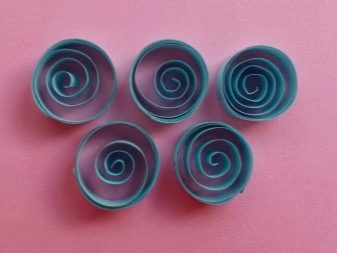
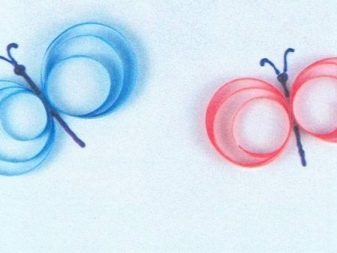
You can execute and butterfly pendant, but this will already be a task of increased complexity. Especially an adult needs to “forget” about the antennae of the butterfly so that the baby sees the missing element and himself remembers its necessity. Already having his first experience in quilling, a preschooler can guess how to make a mustache.
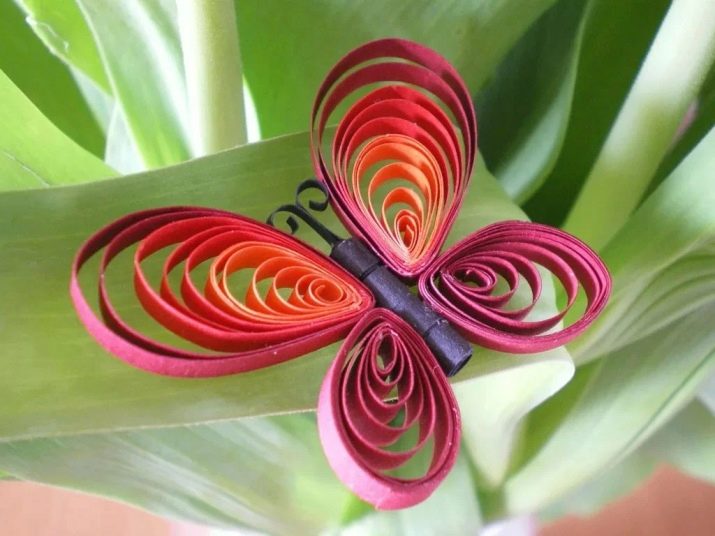
6-7 years old
Children of this age are already capable of voluminous and beautiful products, and they can do most of the work in quilling themselves.
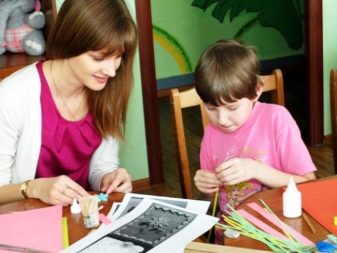
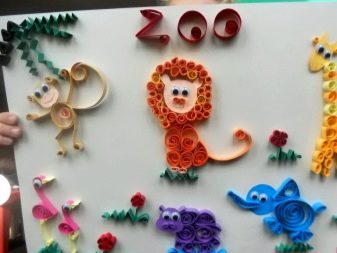
To create a flower meadow you will need:
- colored paper;
- base - thick green cardboard or foamiran, possibly velvet paper;
- pencils / felt-tip pens;
- narrow neck PVA glue;
- tube / round pencil.
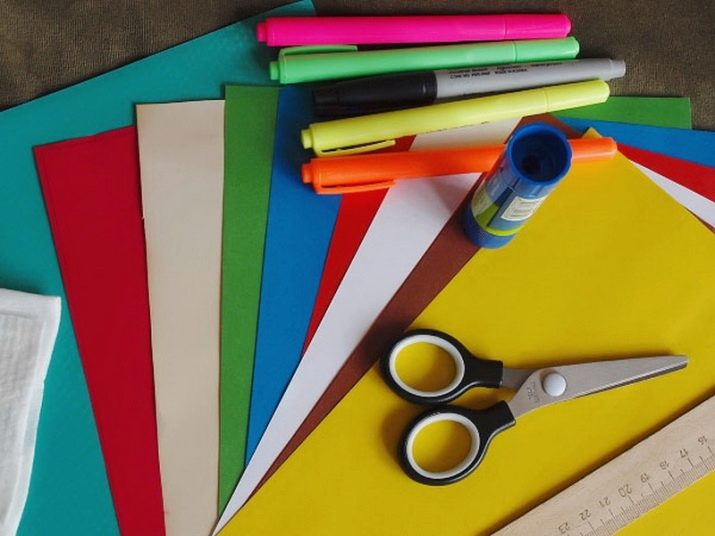
The process involves a certain sequence of steps.
- Colored paper should be cut into strips of 5-7 mm.
- Stripes need to be screwed onto a pencil or tube one by one. The felt-tip pen is also suitable.
- The resulting spirals need to be sized according to the design of the finished flower shapes.
- Spirals need to be connected so that finished flowers are obtained. No need to glue anything - just lay the flowers on the surface without fixing. Stems, petals, leaves need to be laid out so that a finished flower is obtained. And only after a preliminary calculation to evaluate where the flowers will ultimately be placed on a sheet-based.
- Carefully - part by part - you need to glue the modules. With building a compositional solution, the child can be helped, since not always he can arrange all the elements symmetrically and proportionally.
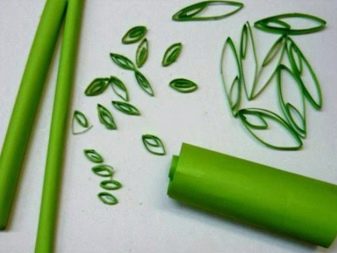
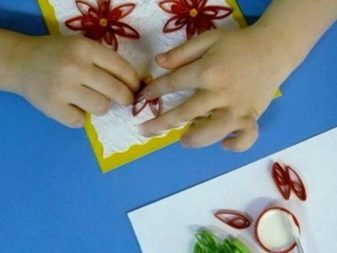
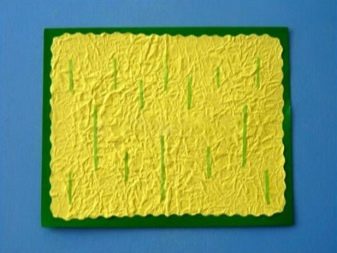
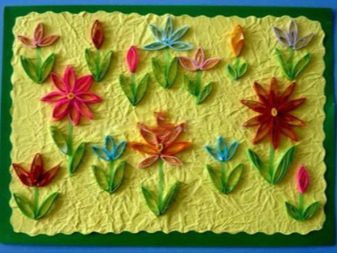
It’s interesting for a child not only to follow the pattern, but to make an author’s composition. Therefore, the execution of colors can be stereotyped, but placing them on the working field is at the discretion of the author.
Why else it makes sense to try yourself in quilling with flowers, because of the versatility of the techniques used in the formation of petals, leaves, stems and antennae.
8-9 years old
At this age, you can already try more complex schemes. The guys even perform styling in the style of Gzhel or Khokhloma. If children start copying works in the style of an outstanding Korean quilling, this is also good - copying is an excellent training and, interestingly, helps to find your own style.
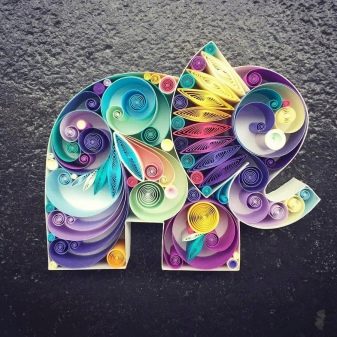
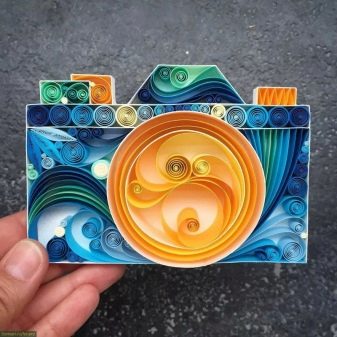
To create a card by March 8, you will need:
- cardboard base 21 by 10.5 cm;
- paper strips 5 mm wide in different colors: pink, lilac, violet and ivory;
- 8 violet rhinestones;
- plain design paper;
- design paper with a pattern;
- curly ruler;
- scissors;
- tweezers;
- PVA glue.
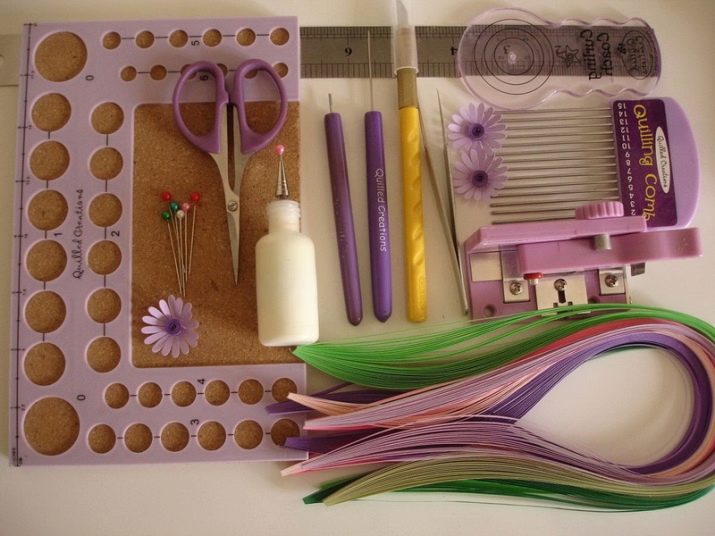
The process includes 5 steps.
- The purple strip should be twisted with a figure eight. Fixation by glue takes place at the bend.
- Now you need to take a pink stripe 17 cm long and roll it up. The coils should be slightly loosened, press all layers with your fingers to form a drop. You need to make 5 such elements - you get a tight roll. Now you should glue the middle and the petals.
- Another flower is made from lilac stripes of the same length. They are also twisted into circles, weakened, but so that the shape does not break. The core of the flower will be pink. Glue everything.
- A strip of 2 cm wide and 17 cm long needs to be cut from the color designer paper. It is necessary to make cuts, not reaching 0.5 cm to the edge. A purple strip should be glued to this edge. Twist with a pencil - a flower comes out with fluffy petals. You also need one more such twist, and the following flowers to make from plain design paper.
- In the hearts of the flowers will be rhinestones. The figure eight already glued to the base of the card must be decorated with two stones fixed in the center. For proper fastening of the elements, tweezers are used. All flowers are glued to different parts of the card.
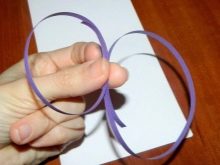
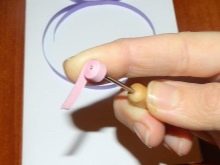
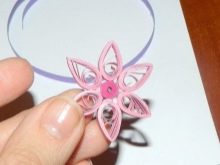
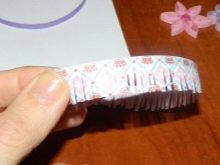
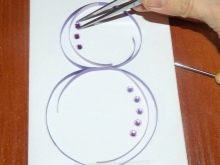
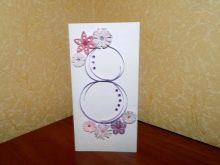
The composition may be supplemented or modified by the author.
Recommendations
And a few more tips that will help you quickly get used to the new artistic direction.
- If you want to get rolls of the same size, it makes sense to purchase a template with different sized holes. Even with a simple “officer” line, this issue can be resolved. Although a special quilling line can be sold in the store of goods for creativity.
- If the rolls are made of thin paper, you do not need to hold them in your hands for a long time, otherwise they will quickly unfold.
- If you want to get exactly a three-dimensional figure, you need to make a spiral from a long strip, and then give the roll a cone-shaped or domed shape. Then with glue on the form are fixed the handle-legs and other elements.
- When buying special quilling paper, you should always pay attention to its length. It should not coincide with the length of ordinary A4 sheets - with a high probability, this is ordinary colored paper, which is sold as quilling sheets.
- Decorative vases and caskets are very beautiful from paper stripes. And snowflakes come out incredibly openwork, weightless.
- Kids will take up the matter with interest if parents demonstrate to them how to make a dragonfly, butterfly, monkey, dinosaur, starfish, palm tree, chickens, flowers out of colored stripes.
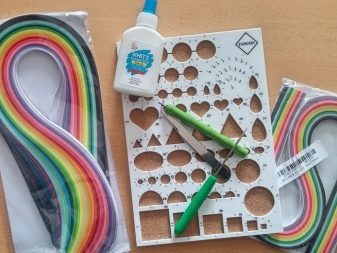
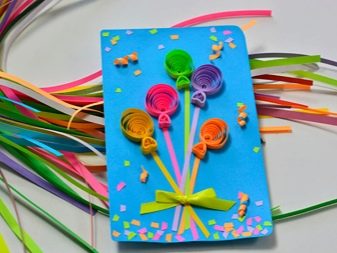
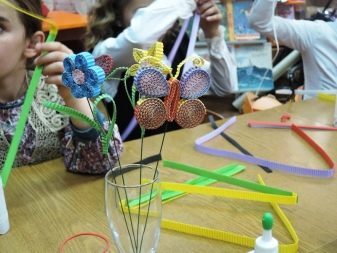
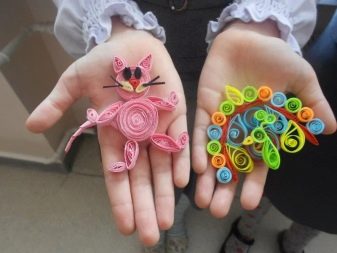
I have an idea! An older child can even blog about how he succeeds in creative experiments in the quilling technique. And this will also be an incentive for further development, and even a small but enlightening mission.
Quilling, by the way, can be combined with other creative directions: origami, modeling, mosaic, and just fine art.
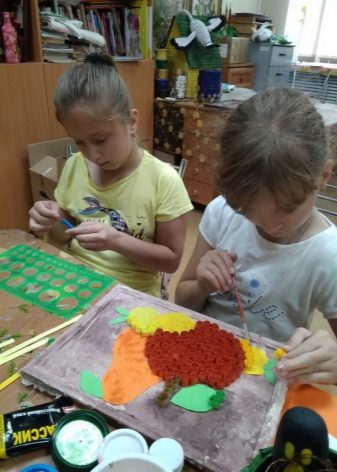
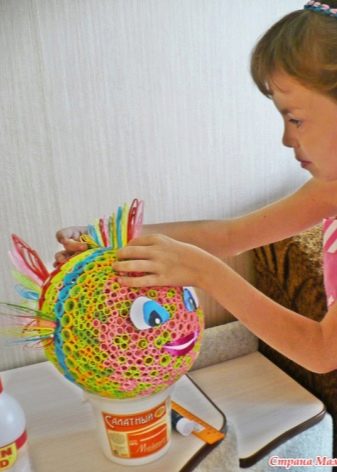
See the following video for the basics of quilling for kids.
